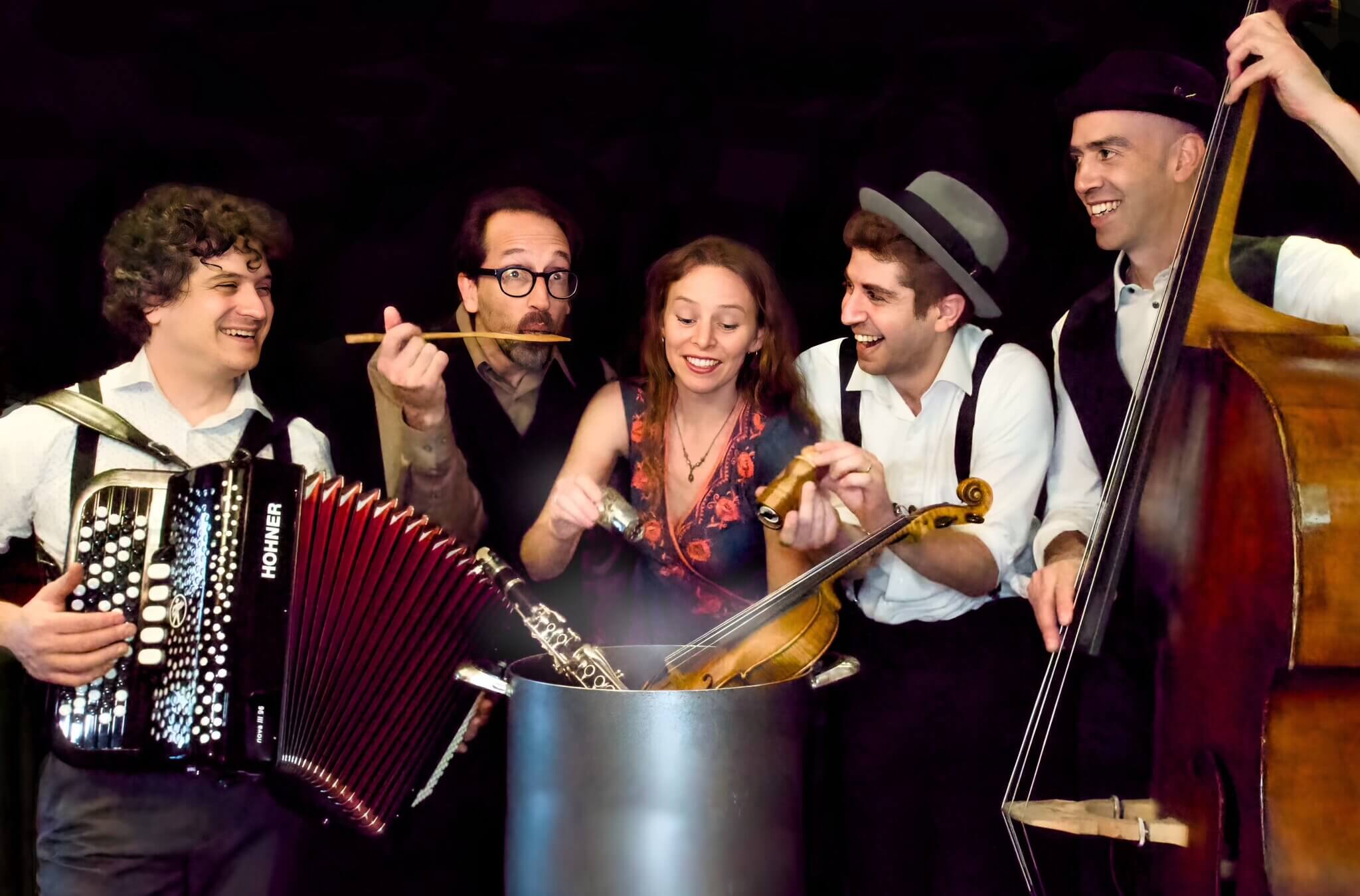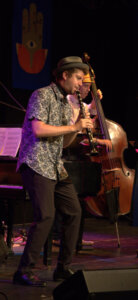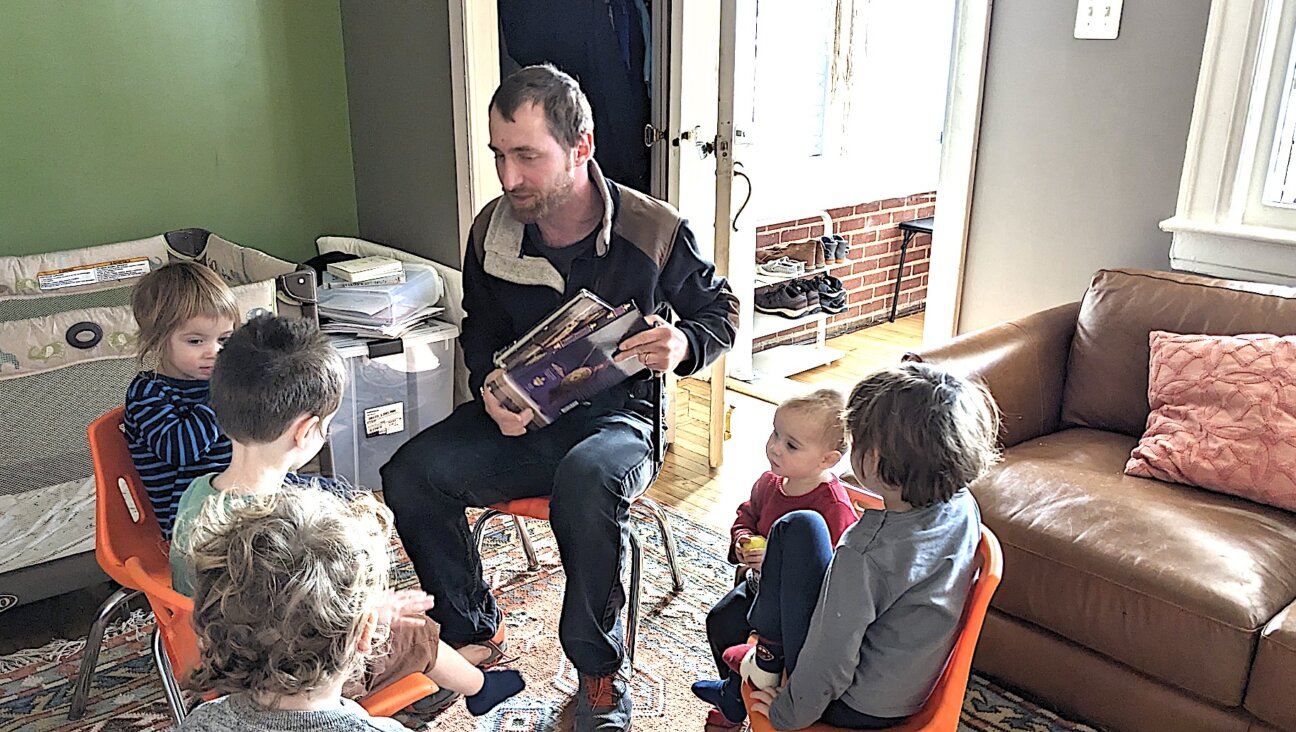How a new quintet is keeping klezmer classy, and classical
Schmaltz and Pepper is bringing classical spice to the Yiddish folk music scene

From left to right: Drew Jurecka, Jeremy Ledbetter, Rebekah Wolkstein, Eric Abramovitz and Michael Herring are the five chamber musicians whose talents make up Schmaltz and Pepper: a new Canadian klezmer ensemble. Courtesy of the Wolkstein-Jurecka family
TORONTO – Five millennial chamber musicians walk into a backyard recording studio in Canada. They emerge with a modern – and thoroughly unique – klezmer ensemble.
That’s the origin story of Schmaltz and Pepper, a new Toronto group infusing Ashkenazi Jewish folk music with classical, jazz and tango arrangements. At least, that’s the short version.

I heard the full version of the story in the living room of Rebekah Wolkstein, the ensemble’s founder and lead vocalist, the weekend before their performance at Toronto’s Ashkenaz Festival.
Framed family photos and Wolkstein’s blue wedding ketubah adorned the living room’s walls. The ensemble had spent the day recording their first album in Wolkstein’s garage, which she and her husband had renovated into a high-tech recording studio. Wolkstein and co-founder Eric Abromovitz were taking a break after a long day of rehearsals.

“I used to listen to Klezmer records and play along with them,” said Wolkstein, who has a doctorate in violin performance. “It felt like music that I should be playing.”
Wolkstein approached clarinetist Eric Abramovitz last November when they were playing a chamber music concert together in Toronto. Almost as a joke, Abramovitz mentioned the idea of starting a klezmer band.
“And then Becca said, ‘let’s do it!’” said Abramovitz, sitting on an armchair next to Wolkstein. “I thought she was pulling my leg!”
Within a week, the artists started meeting at Wolkstein’s house for regular rehearsals. Drew Jurecka, Wolkstein’s husband and collaborator, took on the role of the band’s producer and arranger. Jeremy Ledbetter played the piano, while Michael Herring became the band’s bassist.
Wolkstein organized the quintet’s rehearsal schedule. She also decided on the name: a Yiddish pun, so audience members would laugh before the musicians even started playing.
“She’s a woman of action,” said Abramovitz.
This wasn’t Wolkstein’s first tango…or hora, either.

Prior to founding Schmaltz and Pepper, Wolkstein and Jurecka led the Payadora Tango Ensemble. The group made a record together last year called the Silent Yiddish Tango inspired by the experiences of Holocaust survivors living in Canada. This album was Wolkstein’s first major foray into the klezmer world.
“Now I have this other side of Yiddish music, which is so festive and joyous,” said Wolkstein. “And that’s really what I was craving.”
Schmaltz and Pepper’s free performance at the Ashkenaz Festival later that weekend drew in so many guests that the venue reached maximum capacity. In the line outside, an elderly patron asked if the security could tear down the venue’s walls so more people could listen in.
In “Sorry, Mama!” Wolkstein sings about dating a series of men who appear to be marriage material, until they reveal that they each want to leave their careers and become musicians. The number was a swingy, Borscht Belt-esque routine that included solos for every instrumentalist.
The ensemble also played “Mozart the Mensch,” an original song by Abramovitz that fused elements of both classical and klezmer. Wolkstein and Jurecka duetted on the violin. Abramovitz played haunting, minor-key melodies on the clarinet.
“While klezmer is an old and treasured Ashkenazi Jewish musical tradition, we aim to infuse it with our own unique blend of flavors and spices,” said Wolkstein.
The ensemble has mostly attracted an older crowd so far. (They are blending together two old-school genres, after all.) Wolkstein said that she hopes their band will also introduce klezmer to more young people.
“I have three daughters, and they love this project,” Wolkstein said. Her children even helped out with the band’s photo shoot. “So we’ve got at least a few kids that really like it!”
















